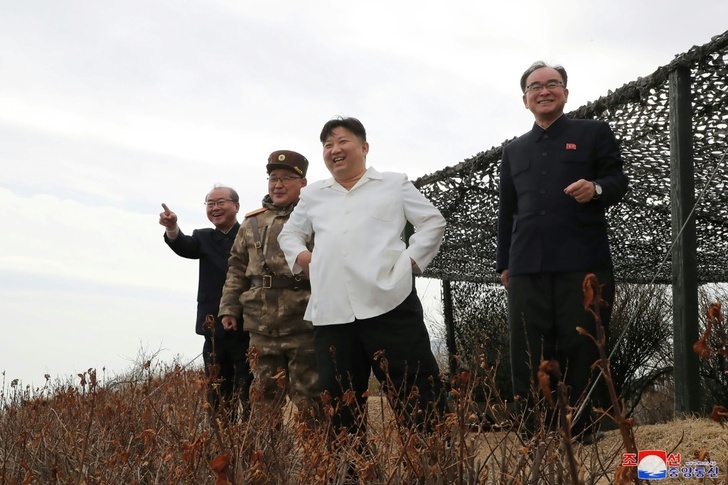North Korea claimed Friday it had tested an underwater nuclear attack drone able to unleash a "radioactive tsunami", as it blamed recent US-South Korea exercises for a deteriorating regional security situation.
Pyongyang carried out drills in response this week, the official Korean Central News Agency said, including testing of the new underwater nuclear delivery system.
"This nuclear underwater attack drone can be deployed at any coast and port or towed by a surface ship for operation," the report said.
The weapon's mission is to "stealthily infiltrate into operational waters and make a super-scale radioactive tsunami ... to destroy naval striker groups and major operational ports of the enemy," it added.
North Korean leader Kim Jong Un personally oversaw the tests, KCNA reported, and images released by Pyongyang's Rodong Sinmun newspaper showed a smiling Kim and what appeared to be an underwater explosion.
The agency also said Pyongyang had fired strategic cruise missiles "tipped with a test warhead simulating a nuclear warhead" on Wednesday.
But analysts questioned North Korea's claims.
The idea that Pyongyang has "a nuclear-capable underwater drone should be met with skepticism," said Leif-Eric Easley, a professor at Ewha University in Seoul.
"Pyongyang's claims about a new weapons system are not the same as a credible demonstration of capability," he added.
In a Twitter post, US-based analyst Ankit Panda said it could not be ruled out that the announcement was "an attempt at deception/psyop".
Even so, the claim was "shocking," Cheong Seong-chang of the private Sejong Institute told AFP.
If true, it is hard to see how Seoul "could respond to such a formidable new weapon from North Korea that (it says) can completely destroy the South's major operational ports."
The KCNA statement also indicates "Pyongyang is more than ready to use its tactical nuclear weapons at any time," An Chan-il, a defector-turned-researcher, told AFP.
"This obviously further strengthens Kim's justification for his future nuclear tests."
- Nuclear power? -
After a record-breaking year of weapons tests and growing nuclear threats from Pyongyang in 2022, Seoul and Washington have ramped up security cooperation.
On Thursday, the two allies completed their largest joint military drills in five years.
Pyongyang views all such exercises as rehearsals for invasion and has threatened "overwhelming" action in response.
On Friday, KCNA described the US-South Korea joint exercises -- dubbed Freedom Shield -- as a drill for "occupying" North Korea.
Pyongyang's "underwater nuclear attack drone" drill had been held "to alert the enemy to an actual nuclear crisis," the agency said.
Leader Kim had also stressed that the North's nuclear capabilities were "being bolstered at a greater speed," KCNA said.
North Korea last year declared itself an "irreversible" nuclear power and Kim recently called for an "exponential" increase in weapons production, including tactical nuclear weapons.
Washington has repeatedly restated its "ironclad" commitment to defending South Korea, including using the "full range of its military capabilities, including nuclear".
South Korea, for its part, is eager to reassure its increasingly nervous public about the US commitment to so-called extended deterrence, where US military assets, including nuclear weapons, serve to prevent attacks on allies.
Friday's statement comes about a week after Pyongyang test-fired its largest and most powerful missile, a Hwasong-17 -- its second ICBM test this year.
cdl/ceb/cwl
© Agence France-Presse
Your content is great. However, if any of the content contained herein violates any rights of yours, including those of copyright, please contact us immediately by e-mail at media[@]kissrpr.com.
Source: Story.KISSPR.com

